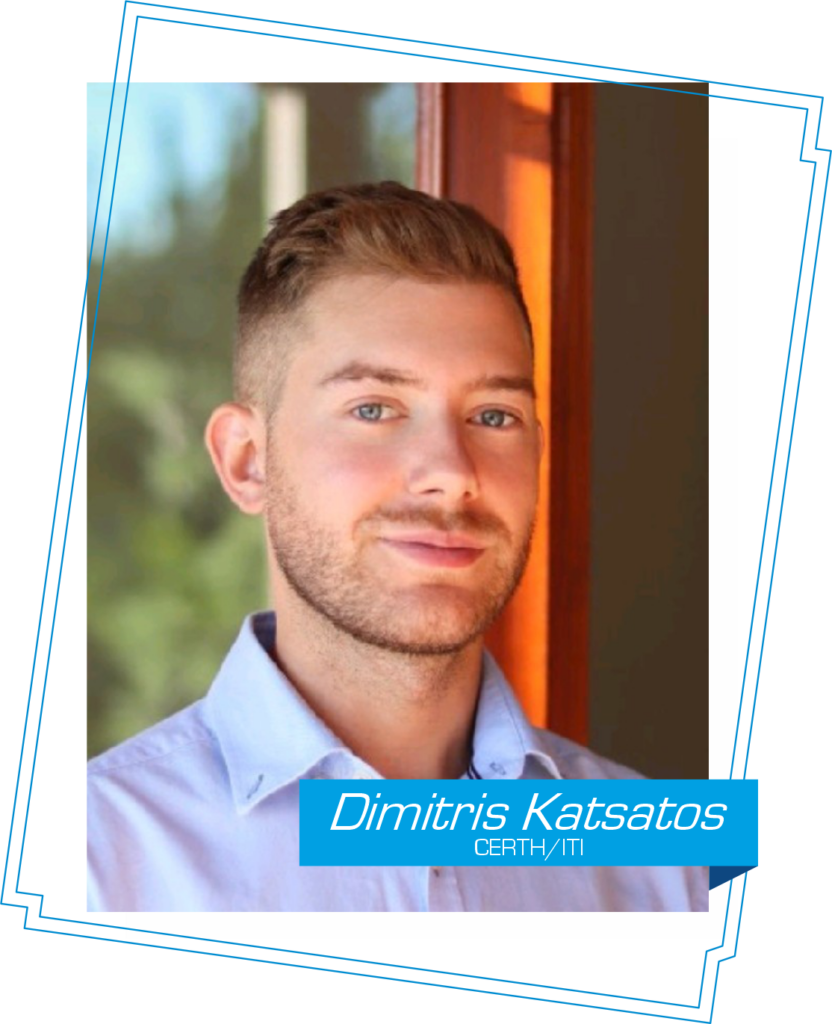

Can you tell us a bit about your background, and how it led you to become involved in the RoBétArmé project?
I graduated from the Department of Electrical and Computer Engineering of the University of Western Macedonia in June 2021, where I also worked as a laboratory teaching assistant. My diploma thesis focused on AI control of DC motors for Electric Vehicles using Fuzzy Logic. Since February 2023, I’ve been employed as a research assistant at the Information Technologies Institute (ITI) of the Centre of Research and Technology Hellas (CERTH), specializing in Robotics, Computer Vision, and AI. I’ve long been intrigued by AI robotics solutions, leading me to explore how machines perceive and interact with their environment. My involvement in the RoBétArmé project stems from my passion for innovative and challenging initiatives. Joining the project felt like a natural fit, offering me the opportunity to be a part of a greater team, working towards common goals.
Could you share some insights into your specific role and involvement in the project? What are your main responsibilities and contributions?
In the RoBétArmé project, I’m involved in WP4: Perception and cognition for construction activities, particularly in the context of T4.1: AI-based scanning, reconstruction, and semantic understanding. In collaboration with Patrick from DTU, we’re developing a part of a broader perception system that utilizes the platform’s sensors to create a detailed 3D model of the scene, highlighting specific regions of interest. For example, in respect of Use-Case 1: Construction of ground support walls, our aim was to reconstruct and semantically annotate areas featuring exposed rebars within the environment. Later, these extracted regions of interest will serve as input to initialize the volumetric modeling process. Additionally, I’m contributing to WP5: Collaborative robotic skills for autonomous construction and maintenance, where I’m focusing on robot localization and navigation technologies. Within this domain, our current focus is to enhance robot localization in GPS-denied areas and facilitate optimal path planning solutions for autonomous navigation purposes.
Research endeavors often come with challenges and obstacles. What are some of the main challenges you've encountered during your journey with RoBétArmé, and how have you managed to overcome them?
All researchers encounter obstacles in their work, navigating complexities unique to their fields. In my case, the biggest obstacle centered around devising a solution adaptable to the diverse use cases of the RoBétArmé project, encompassing both algorithmic and sensor requirements. Additionally, the integration of the interconnected submodules within T4.1 posed a significant hurdle, as well as the experimentation of our final framework on a robotic platform at an actual construction site. To overcome these challenges, it was vital to have a great team by my side throughout this time and I really owe them a lot of respect. I must also highlight the excellent collaboration with Patrick, which played a crucial role in swiftly addressing any issues that arose. This partnership ensured that our efforts stayed focused and aligned with our objectives, ultimately driving progress within the project.
Collaboration and networking are essential in research projects like RoBétArmé. Could you discuss some of your experiences collaborating with other researchers and institutions within the project?
Effective collaboration and interaction with other research teams are crucial aspects of participating in demanding projects like RoBétArmé. In my experience, engaging in intellectual meetings with our partners provided the perfect opportunity to share our passion, connect and interact with the individuals behind each task. This paved the way for more frequent communication among team members, strengthening collaborative efforts within the project and fostering the exchange of new ideas.
Can you highlight any specific achievements or breakthroughs from your work within the project that you're particularly proud of?
A crucial point was reached when we had the opportunity to test our developed framework in real-world scenarios during the 4th plenary meeting in Denmark, hosted at the demos area meticulously organized by CEAS. It was a pivotal moment for us to assess the effectiveness of our approach and identify any areas that required further refinement. I vividly recall the real experiments conducted at CEAS, where we encountered several challenges with the sensors due to the harsh conditions we met at the construction site. Amidst the difficulties encountered, the experiments showed that our developed framework can perform accurately and effectively in the test environment, promising high accurate results for the final demos of RoBétArmé and showcasing its potential usage for real-world applications.
Looking to the future, what are your hopes and aspirations for the impact of your research within RoBétArmé? How do you envision it contributing to advancements in your field and society as a whole?
The integration of robots in the construction environment holds paramount significance as it revolutionizes traditional methodologies, enhancing efficiency, precision, and safety while mitigating labor-intensive tasks, thereby empowering human workers to focus on more intricate aspects of construction projects. The collective effort of all the contributing partners is remarkable and the entire RoBétArmé project team is committed to revolutionizing the digitalization of the construction domain. In the future, I endeavor to witness the impact of our work, hoping to inspire more research projects towards the automation of the construction industry. It’s incredibly fulfilling to see our efforts make a real difference in solving practical problems.